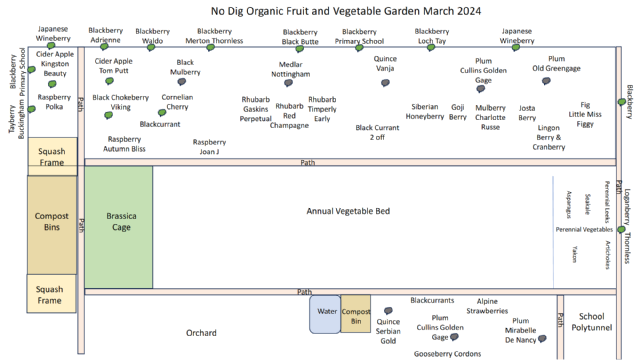NO DIG VEGETABLE AND FRUIT COMMUNAL GROWING

In 2010 a small group of gardeners in the small village of Strathkinness in Fife started a Community Garden on two acres of land. Over the years it developed into an 80 tree
|

One requirement for no dig is to obtain plenty of compost. Although we have 12 large compost heaps in the garden we had to import the majority of the 30 tonne in but was fortunate in having readily available PAS 100 material of excellent quality from both Dundee and Fife Councils. This
We have measured the carbon content at different positions at a depth of 250mm with a very respectable 5% carbon using the Hutton Institute photographic app available only in Scotland unfortunately. |
|
We have a small plant propagation team who are presently evaluating a range of peat free seed and potting composts including a home made seed compost that has performed very well so far. • We didn’t use any crop rotation and just kept replanting an area once it had been harvested producing two or three crops in any given year I.e. kept the beds with plant cover as much as is possible. Even brassicas have been grown in the same location which has made netting against pigeons easier. We will monitor this carefully looking out for plant diseases such as club root. • It’s a great way to get beginners motivated and learning as results happen so quickly, weeds are minimal, walking on the beds appears to make no difference. • We keep the beds in an undisturbed state. Root vegetables are carefully eased out the ground with a light recovering of compost when necessary. When a plant has finished cropping e.g. a brassica it is not dug out but cut out at ground level so maintaining the soil biology and helping to sesquate stable carbon. In conclusion this project has been very successful in getting absolute beginners growing and sharing organic food in a communal setting with minimal effort producing large quantities of high quality vegetables with fruit hopefully following later this year. It’s also great fun to garden this way with others.
(1) A tale of four orchards, Robert Bilson PPG magazine |

|
Edit this text
